
Filter News
Area of Research
- Advanced Manufacturing (1)
- Biology and Environment (19)
- Computational Biology (1)
- Computational Engineering (1)
- Computer Science (4)
- Energy Science (13)
- Fusion and Fission (2)
- Fusion Energy (1)
- Isotopes (12)
- Materials (18)
- Materials for Computing (3)
- National Security (7)
- Neutron Science (5)
- Nuclear Science and Technology (4)
- Quantum information Science (1)
- Supercomputing (9)
News Type
News Topics
- (-) Artificial Intelligence (25)
- (-) Biomedical (24)
- (-) Biotechnology (11)
- (-) Cybersecurity (9)
- (-) Isotopes (18)
- (-) Mercury (7)
- (-) Microscopy (22)
- (-) Physics (20)
- (-) Space Exploration (10)
- (-) Summit (10)
- 3-D Printing/Advanced Manufacturing (47)
- Advanced Reactors (15)
- Big Data (29)
- Bioenergy (40)
- Biology (48)
- Buildings (31)
- Chemical Sciences (22)
- Clean Water (21)
- Composites (14)
- Computer Science (56)
- Coronavirus (17)
- Critical Materials (14)
- Emergency (1)
- Energy Storage (45)
- Environment (88)
- Exascale Computing (4)
- Fossil Energy (1)
- Frontier (4)
- Fusion (18)
- Grid (29)
- High-Performance Computing (23)
- Hydropower (8)
- Irradiation (2)
- ITER (4)
- Machine Learning (24)
- Materials (45)
- Materials Science (49)
- Mathematics (8)
- Molten Salt (5)
- Nanotechnology (18)
- National Security (20)
- Neutron Science (37)
- Nuclear Energy (35)
- Partnerships (4)
- Polymers (15)
- Quantum Computing (6)
- Quantum Science (17)
- Security (8)
- Simulation (17)
- Statistics (1)
- Transportation (48)
Media Contacts

Oak Ridge National Laboratory is using artificial intelligence to analyze data from published medical studies associated with bullying to reveal the potential of broader impacts, such as mental illness or disease.

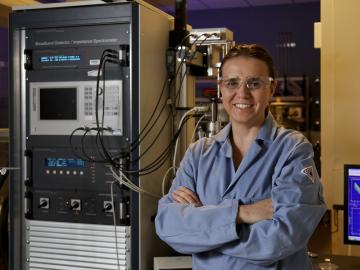
Vera Bocharova at the Department of Energy’s Oak Ridge National Laboratory investigates the structure and dynamics of soft materials.
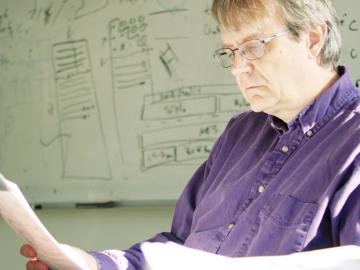
More than 1800 years ago, Chinese astronomers puzzled over the sudden appearance of a bright “guest star” in the sky, unaware that they were witnessing the cosmic forge of a supernova, an event repeated countless times scattered across the universe.
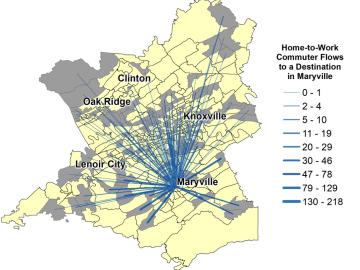
Oak Ridge National Laboratory geospatial scientists who study the movement of people are using advanced machine learning methods to better predict home-to-work commuting patterns.
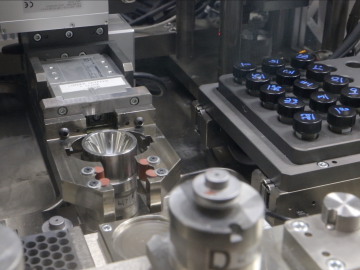
By automating the production of neptunium oxide-aluminum pellets, Oak Ridge National Laboratory scientists have eliminated a key bottleneck when producing plutonium-238 used by NASA to fuel deep space exploration.

Oak Ridge National Laboratory scientists studying fuel cells as a potential alternative to internal combustion engines used sophisticated electron microscopy to investigate the benefits of replacing high-cost platinum with a lower cost, carbon-nitrogen-manganese-based catalyst.
![2018-P07635 BL-6 user - Univ of Guelph-6004R_sm[2].jpg 2018-P07635 BL-6 user - Univ of Guelph-6004R_sm[2].jpg](/sites/default/files/styles/list_page_thumbnail/public/2018-P07635%20BL-6%20user%20-%20Univ%20of%20Guelph-6004R_sm%5B2%5D.jpg?itok=hUSyvkP0)
A team of scientists, led by University of Guelph professor John Dutcher, are using neutrons at ORNL’s Spallation Neutron Source to unlock the secrets of natural nanoparticles that could be used to improve medicines.
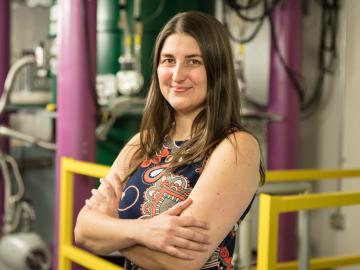
Leah Broussard, a physicist at the Department of Energy’s Oak Ridge National Laboratory, has so much fun exploring the neutron that she alternates between calling it her “laboratory” and “playground” for understanding the universe. “The neutron is special,” she said of the sub...
Physicists turned to the “doubly magic” tin isotope Sn-132, colliding it with a target at Oak Ridge National Laboratory to assess its properties as it lost a neutron to become Sn-131.


